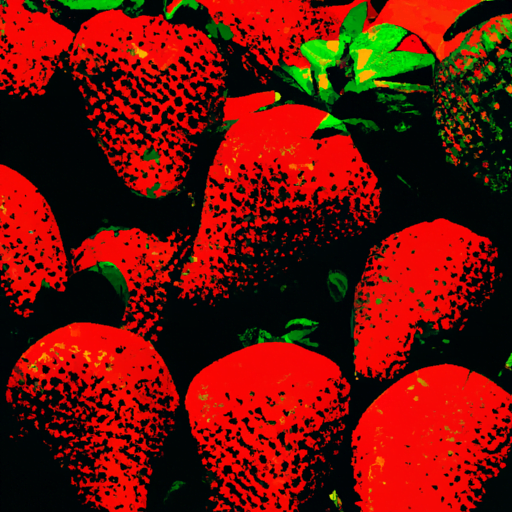
-
Table of Contents
- AI-Enhanced Photo Editing: Redefining the Post-Production Process
- The Rise of AI in Photo Editing
- Benefits of AI-Enhanced Photo Editing
- Applications of AI in Photo Editing
- Automated Image Enhancement
- Object Removal and Manipulation
- Noise Reduction
- Facial Recognition and Retouching
- The Future of AI-Enhanced Photo Editing
- Conclusion
AI-Enhanced Photo Editing: Redefining the Post-Production Process

Photography has come a long way since its inception, and with the advent of artificial intelligence (AI), the post-production process has been revolutionized. AI-enhanced photo editing tools have emerged as powerful allies for photographers, enabling them to achieve stunning results with minimal effort. This article explores the impact of AI on photo editing, delving into its benefits, applications, and the future of this technology.
The Rise of AI in Photo Editing
Artificial intelligence has made significant strides in recent years, and its integration into photo editing software has transformed the way photographers approach post-production. Traditional photo editing techniques often required extensive manual adjustments, consuming valuable time and effort. However, AI-powered tools have automated and streamlined many of these processes, allowing photographers to focus more on their creative vision.
One of the key advancements in AI-enhanced photo editing is the ability to intelligently enhance images. AI algorithms can analyze an image and make adjustments to improve its overall quality. For example, AI can automatically adjust exposure, color balance, and sharpness, resulting in a more visually appealing photograph. This not only saves time but also ensures consistent and professional-looking results.
Benefits of AI-Enhanced Photo Editing
The integration of AI in photo editing brings numerous benefits to photographers, both amateurs and professionals alike. Here are some of the key advantages:
- Time Efficiency: AI-powered tools can significantly reduce the time spent on manual adjustments, allowing photographers to focus on other aspects of their work.
- Consistency: AI algorithms ensure consistent results across a series of images, maintaining a cohesive look and feel.
- Enhanced Creativity: By automating repetitive tasks, AI frees up creative energy, enabling photographers to explore new ideas and experiment with different styles.
- Improved Accuracy: AI algorithms can analyze images with precision, identifying and correcting imperfections that may be missed by the human eye.
- Accessibility: AI-powered photo editing tools are becoming increasingly user-friendly, making advanced editing techniques accessible to a wider audience.
Applications of AI in Photo Editing
The applications of AI in photo editing are vast and diverse. Let’s explore some of the key areas where AI has made a significant impact:
Automated Image Enhancement
AI algorithms can automatically enhance various aspects of an image, such as exposure, color, and sharpness. This saves photographers the time and effort required to manually adjust these parameters for each photo. For example, Adobe’s Sensei AI technology analyzes an image and suggests automatic enhancements, which can be further fine-tuned by the photographer.
Object Removal and Manipulation
AI-powered tools can intelligently remove unwanted objects from an image or manipulate them to achieve a desired effect. For instance, if a photographer wants to remove a distracting element from a landscape photo, AI algorithms can seamlessly fill in the gap with content that matches the surrounding area. This eliminates the need for complex manual editing techniques.
Noise Reduction
Noise reduction is a common challenge in low-light photography. AI algorithms can analyze an image and intelligently reduce noise while preserving important details. This allows photographers to capture high-quality images even in challenging lighting conditions.
Facial Recognition and Retouching
AI-powered facial recognition algorithms can identify faces in an image and automatically apply retouching techniques to enhance their appearance. This includes reducing blemishes, smoothing skin, and enhancing facial features. These tools are particularly useful in portrait photography, where achieving flawless skin and natural-looking retouching is crucial.
The Future of AI-Enhanced Photo Editing
The future of AI-enhanced photo editing looks promising, with continuous advancements and innovations on the horizon. Here are some key trends to watch out for:
- Improved AI Algorithms: As AI algorithms continue to evolve, they will become more sophisticated in understanding and enhancing images. This will result in even more accurate and realistic adjustments.
- Customization and Personalization: AI-powered photo editing tools will offer greater customization options, allowing photographers to fine-tune the algorithms according to their preferences and artistic style.
- Real-Time Editing: With the increasing power of AI, real-time editing capabilities will become more prevalent. Photographers will be able to see the effects of adjustments instantly, enabling faster and more efficient editing workflows.
- Integration with Other Technologies: AI-enhanced photo editing will likely integrate with other emerging technologies, such as virtual reality (VR) and augmented reality (AR), opening up new possibilities for immersive editing experiences.
Conclusion
The integration of AI in photo editing has redefined the post-production process, empowering photographers with powerful tools that save time, enhance creativity, and improve the overall quality of their work. From automated image enhancement to object removal and facial retouching, AI has revolutionized various aspects of photo editing. As AI algorithms continue to advance, the future holds even more exciting possibilities for AI-enhanced photo editing, promising greater customization, real-time editing, and integration with other cutting-edge technologies. Embracing AI in photo editing is not only a smart move for photographers but also a testament to the transformative power of technology in the creative industry.
